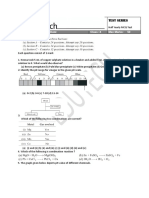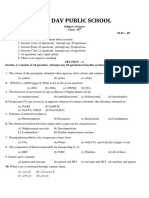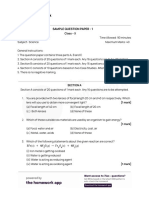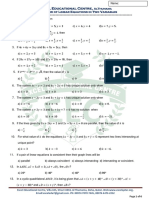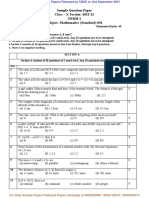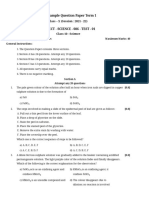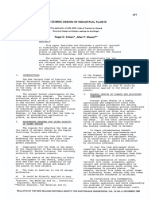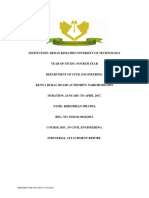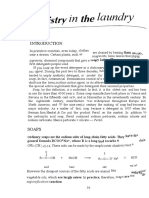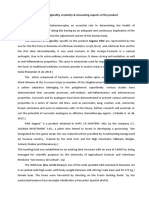0% found this document useful (0 votes)
100 views17 pagesPre-Board Term - I Examination SCIENCE (086) PB-I-2021-10: General Instructions
This document contains the instructions and first 20 multiple choice questions from Section A of a science exam. The instructions indicate that Section A contains 24 questions and students should attempt any 20. Each question has 4 answer options and all questions carry equal marks. There is no negative marking. The questions cover topics in chemistry including chemical reactions, acids and bases, redox reactions, and properties of salts.
Uploaded by
VVS. G.S1074Copyright
© © All Rights Reserved
We take content rights seriously. If you suspect this is your content, claim it here.
Available Formats
Download as PDF, TXT or read online on Scribd
0% found this document useful (0 votes)
100 views17 pagesPre-Board Term - I Examination SCIENCE (086) PB-I-2021-10: General Instructions
This document contains the instructions and first 20 multiple choice questions from Section A of a science exam. The instructions indicate that Section A contains 24 questions and students should attempt any 20. Each question has 4 answer options and all questions carry equal marks. There is no negative marking. The questions cover topics in chemistry including chemical reactions, acids and bases, redox reactions, and properties of salts.
Uploaded by
VVS. G.S1074Copyright
© © All Rights Reserved
We take content rights seriously. If you suspect this is your content, claim it here.
Available Formats
Download as PDF, TXT or read online on Scribd
/ 17








